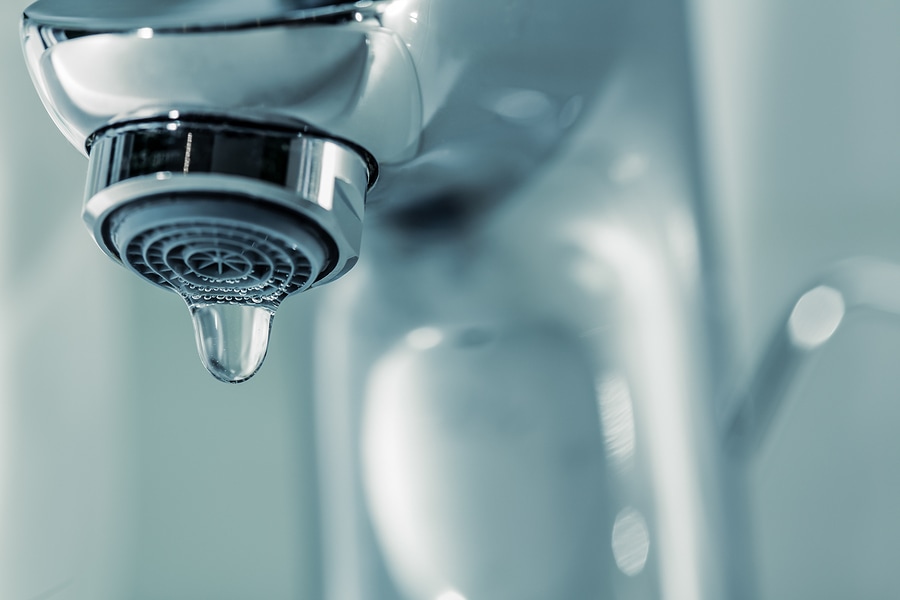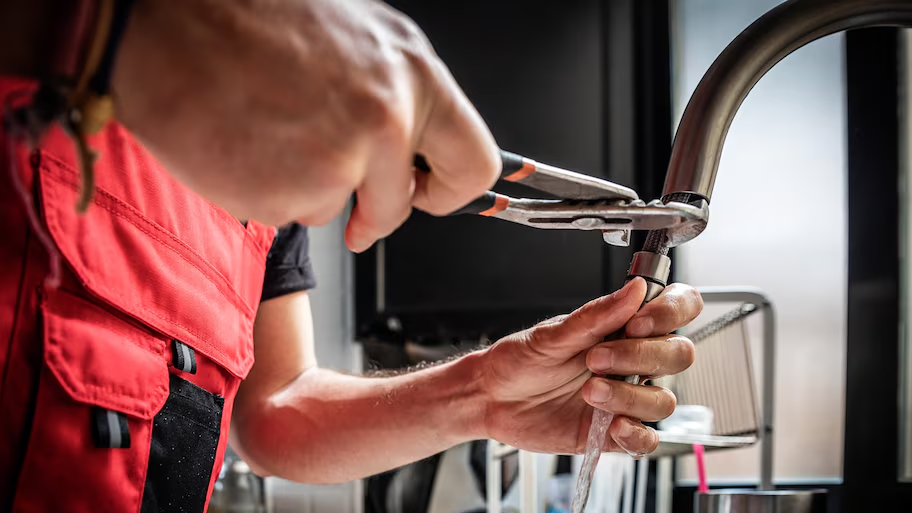Your Upsides of Resolving a Dripping Faucet
Your Upsides of Resolving a Dripping Faucet
Blog Article
We've encountered this great article involving Leaky Faucets: Why They Happen & What to Do About Them down the page on the net and concluded it made sense to quickly share it with you over here.

Trickling taps could appear like a minor inconvenience, yet their impact exceeds just the aggravation of the audio. From wasting water to sustaining unneeded monetary prices and health threats, ignoring a trickling faucet can bring about various consequences. In this post, we'll look into why it's critical to resolve this typical household problem promptly and effectively.
Waste of Water
Environmental Impact
Dripping faucets add considerably to water wastage. According to the Epa (EPA), a solitary tap leaking at one drip per second can waste greater than 3,000 gallons of water each year. This not only strains water sources yet also affects environments and wildlife based on them.
Financial Costs
Boosted Water Costs
Beyond the environmental influence, trickling taps can blow up water costs substantially. The collected waste in time translates right into higher utility costs, which might have been prevented with timely repair work.
Potential Property Damages
Furthermore, extended leaking can result in damage to fixtures and surfaces surrounding the tap. Water build-up can cause discoloration, rust, and even structural concerns if left unattended, leading to extra fixing expenses.
Health Worries
Mold and Mold Growth
The continuous visibility of dampness from a trickling faucet develops a suitable setting for mold and mold development. These fungis not just endanger indoor air quality yet likewise present health and wellness dangers, especially for people with respiratory problems or allergic reactions.
Waterborne Conditions
Stagnant water in leaking faucets can end up being a breeding ground for germs and various other virus, enhancing the risk of waterborne diseases. Pollutants such as Legionella microorganisms grow in stagnant water, potentially resulting in severe ailments when consumed or breathed in.
Do it yourself vs. Expert Repair work
Pros and Cons of Do It Yourself Repair Work
While some might try to deal with a dripping faucet themselves, do it yourself fixings come with their own collection of challenges. Without proper expertise and devices, DIY attempts can aggravate the concern or lead to incomplete repair services, lengthening the problem.
Benefits of Hiring an Expert Plumber
Hiring an expert plumber makes sure that the underlying source of the trickling faucet is addressed efficiently. Plumbing technicians possess the proficiency and devices to identify and repair faucet concerns successfully, conserving time and lessening the danger of additional damage.
Step-by-Step Guide to Fixing a Dripping Tap
Tools Needed
Before trying to deal with a trickling tap, gather the needed devices, including a flexible wrench, screwdrivers, replacement parts (such as washing machines or cartridges), and plumber's tape.
Typical Tap Issues and Their Solutions
Determine the sort of faucet and the particular concern causing the drip. Common issues consist of damaged washers, corroded shutoff seats, or faulty O-rings. Refer to producer guidelines or on the internet tutorials for step-by-step support on repair services.
Preventive Measures
Normal Maintenance Tips
To avoid leaking faucets, carry out routine upkeep such as cleaning up aerators, examining for leaks, and changing worn-out parts without delay. In addition, consider setting up water-saving devices or updating to extra reliable components.
Importance of Prompt Repair Works
Dealing with leaking faucets as soon as they're noticed prevents additional water waste and prospective damages, inevitably saving both water and cash over time.
Effect On Home Value
Understanding of Well-Maintained Property
Preserving a property in good condition, consisting of resolving maintenance issues like leaking taps, improves its regarded value and worth among possible purchasers or tenants.
Impact on Resale Value
Features with well-kept plumbing fixtures, consisting of taps, command higher resale worths in the property market. Attending to dripping faucets can add to a favorable impression throughout property assessments and negotiations.
Ecological Duty
Specific Payment to Conservation
Taking duty for taking care of leaking faucets aligns with broader initiatives toward water preservation and ecological sustainability. Every person's actions jointly make a substantial impact on protecting valuable sources.
Sustainable Living Practices
By focusing on timely repairs and embracing water-saving practices, people contribute to lasting living practices that benefit both present and future generations.
Conclusion
Resolving a trickling faucet surpasses mere benefit; it's a necessary action towards preserving water, lowering financial costs, and securing wellness and residential property. Whether via do it yourself repairs or specialist assistance, taking action to repair dripping taps is a small yet impactful means to promote responsible stewardship of sources and add to a healthier, more lasting future.
Why Are My Faucets Dripping (And Can I Fix it Myself)?
Causes of a Dripping or Leaking Faucet
Whether you’re hearing drops of water falling and hitting a sink, or noticing water ooze out from the base of the spout, you shouldn’t ignore a dripping or leaking faucet. And, the good news is, sometimes you can fix the problem yourself.
In this article, we’ll review a few common causes of dripping and leaky. We’ll also walk you through some basic ways to find the problem and handle it without calling anyone — and let you know when to call in a pro.
But, no matter what the cause, or whether you can handle it on your own, the sooner you address it, the better.
Each drip may be a tiny amount of water. But, they all add up quickly. According to the U.S. Geological Survey, one faucet losing one drop every 20 seconds — five a minute — wastes around a liter of water every day, and 173 gallons a year.
Add in more than one in your house, and it’s a lot of water to waste. So, we’ll help you get to the bottom of things quickly.
Four Reasons Your Faucet May Be Dripping
Aerator is Damaged or Unseated Valve Seat is Corroded O Ring is Loose or Worn Out Part of the Assembly is Loose Aerator is Damaged or Unseated
If you unscrew the end of your faucet, you’ll find the aerator. It’s the little stem piece with a screen on it that shuts off the water circulation.
If it’s damaged, or if it’s not sitting right, it will allow water to pass through.
Valve Seat is Corroded
Next is the valve seat, which is connected to the washer. If the washer wasn’t in place correctly, then it could have ground against the seat. Over time, this damages the valve seat.
The problem could also be corrosion: Over time, the part has worn out, and it’s now allowing water to pass through.
O Ring is Loose or Worn Out
Since the o ring is only a small rubber gasket, it’s a common reason why the faucet is dripping. You’ll find it at the base of the faucet, and it’s there to keep water from coming out where it’s not supposed to.
However, it’s common for the o ring to wear out over time. When it does, you’ll notice a drip.
Part of the Assembly is Loose
So far, we’ve looked at a few small, specific parts. But, the problem could be anywhere in the assembly if something’s out of place.
Even if a part isn’t damaged, over time, it may have become loose or dislodged. It could be the parts we mentioned, or the aerator at the tip of the faucet, the stem itself,
Can I Fix a Leaky Faucet Myself?
Depending on the problem, and how handy you are, there’s a chance you can fix a leaky faucet without calling a professional. But, you do run the risk of making the problem worse.
If it’s a small drip, you can certainly try a few troubleshooting tactics. We’ll walk you through them in a moment.
But, no matter what, your first step should be shutting off the water coming into the faucet. You should find a shutoff valve under the sink on the pipes leading to it. Turn each one clockwise until they close tightly.
Next, make sure you have the right tools for whatever you’re attempting. It’s tempting to make do with what you have. But, you need the right ones for a reason: You’re often dealing with small parts that can break if you handle them carelessly.
If you’re feeling confident, here are some places to start.
Items Near the Tip of the Faucet
A few of the parts we mentioned — particularly the valve seat and washer — are located at the tip of the faucet where the water comes out. They’re easy to access, making it a good place to start.
Check the O Ring
To check the o ring, you’ll need to take off the spout at the base. It’s easiest on kitchen sinks with long spouts, versus the smaller, bulkier base on most bathroom sinks.
Either way, this can be tricky, so do it carefully and don’t force anything. If it’s not coming right off, you’re much better off calling in a pro than possibly breaking something.
For a kitchen sink, there’s usually a nut or coupling assembly at the base of the spout. These often slide off easily without using any tools.
Once you’ve disassembled those parts, gently but forcefully twist off the spout.
Then, you can see the o rings. There should be two of the rubber gaskets on the base. If they look worn or damaged, replace them, and see if that solves the problem.

I have been very occupied with Water Dripping from Faucet: Why and How to Fix and I really hope you enjoyed the entire page. Remember to take the time to promote this blog entry if you enjoyed reading it. Thank you so much for taking the time to read it.
Report this page